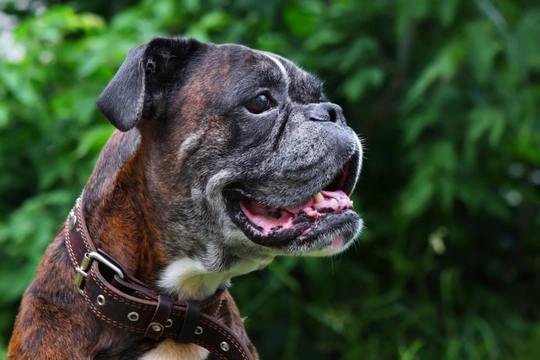
An enduringly popular dog breed in the UK: The boxer
Boxer dogs are one breed that most people could pick out of a line-up with ease, thanks to their distinctive appearances and the fact that thy have long been one of the UK’s most common and popular breeds.
The boxer dog is ranked 32nd out of a total of 241 dog breeds and types in the UK, a position that they have held consistently for some time – and whilst they’re a long way off the top ten list, they’ve never really fallen out of fashion here either.
Whether you already own a boxer and know all about them or are considering buying one as your next pet, you might be wondering what makes them so popular, and how they’ve maintained a steady position within the top 40 dog breeds for many years.
In this article we will look at the popularity of the boxer dog breed in more detail, covering their core traits and the other key factors that have helped to secure their place as one of the nation’s favourites. Read on to learn more.
The boxer has been around for a long time
The boxer dog breed hails from Germany, and whilst the breed didn’t become formally recognised until the late 1890’s, they became very firmly established very quickly, both in their home country and the UK.
Boxers first became popular in the UK in the 1930’s when the first dogs of the breed were recognised by The Kennel Club, and they began to become common sights in show rings up and down the country in relatively short order.
Many dog breeds went into a steep decline during World War II, due to the scarcity of resources and the effects of the war. This effect was often particularly acute among dog breeds that originated in Germany, due to the anti-German sentiment of the time, but the boxer weathered the storm better than most other German dog breeds, having already become a firm favourite in a very short space of time.
They have a distinctive appearance
The boxer is a large dog breed that is muscular but lean, being tall and long-legged with a deep chest and thick neck and of course, that signature brachycephalic or flattened face. It used to be common practice for dogs of the breed to have their tails docked, and in some cases, their ears cropped too; and for people over the age of around forty, seeing today’s boxers with their long tails still sometimes seems a little unusual!
However, docking and ear cropping has thankfully been illegal in the UK for many years now, which allows the boxer’s natural good looks to shine through.
Boxers can be seen in either fawn or brindle colours (potentially with some white in the brindle) within the breed standard, and in some cases, all-white boxers can be found too. However, this full-white colouration can be accompanied by congenital deafness, and so it is not considered to be a desirable colour.
Their coats are low-maintenance
Boxer coats are short and single-layered, and while every dog can benefit from regular brushing and grooming, caring for the boxer coat is not particularly onerous. They do shed their coats but this is moderate rather than heavy, and because the hair is short, it doesn’t tend to make a huge mess around the home!
They tend to be good with children
Boxers are inquisitive, playful and entertaining, not least due to their tendency to “box” with their front paws, which is how the breed got its name. They are high energy dogs that need a lot of exercise, stimulation and walks, and they tend to enjoy playing with children in particular.
A boxer that is used to well behaved children and properly socialised with them will often form strong bonds with the smaller members of the family, and be very affectionate and loyal to them.
They are soulful and affectionate
The boxer is one breed that wears its heart on its sleeve, and they are very soulful, loving and affectionate dogs that love the company of the people who care for them.
They tend to be quiet and well behaved in the home assuming that they get enough exercise, and they will tolerate being left alone for moderate periods of time without becoming destructive.
However, they can be sensitive to change and upheaval, and they can manage an offended or hurt expression better than most other dog breeds!
They are normally reasonably easy to train
Boxers are around the middle of the pack in terms of canine intelligence, which means that they are usually fairly straightforward to train. They learn basic commands with relative ease, and because they bond so strongly with their handlers, they work hard to please and thrive on lots of praise and reward.
Boxers can usually live happily with other pets
In order to live happily and safely with smaller pets like cats, ferrets or birds, all dogs need to be properly trained, managed, introduced and supervised to ensure that they behave properly and don’t see the other animal as prey.
Assuming that this is achieved, boxers usually get on well with smaller pets of other species, and are often very affectionate with cats that they know and live with.
This makes them a viable option for people who already have other pets, and who are prepared to take the time to introduce them and ensure that both parties can be trusted!



